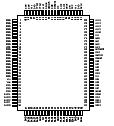TIGER560: Features: Performs all required USB interfacing and control functions for interfacing a regular phone or phone handset to the PC via USB. Audio functions − USB audio class device mode −...
floor Price/Ceiling Price
- Part Number:
- TIGER560
- Supply Ability:
- 5000
Price Break
- Qty
- 1~5000
- Unit Price
- Negotiable
- Processing time
- 15 Days
SeekIC Buyer Protection PLUS - newly updated for 2013!
- Escrow Protection.
- Guaranteed refunds.
- Secure payments.
- Learn more >>
Month Sales
268 Transactions
Payment Methods
All payment methods are secure and covered by SeekIC Buyer Protection PLUS.

 TIGER560 Data Sheet
TIGER560 Data Sheet






